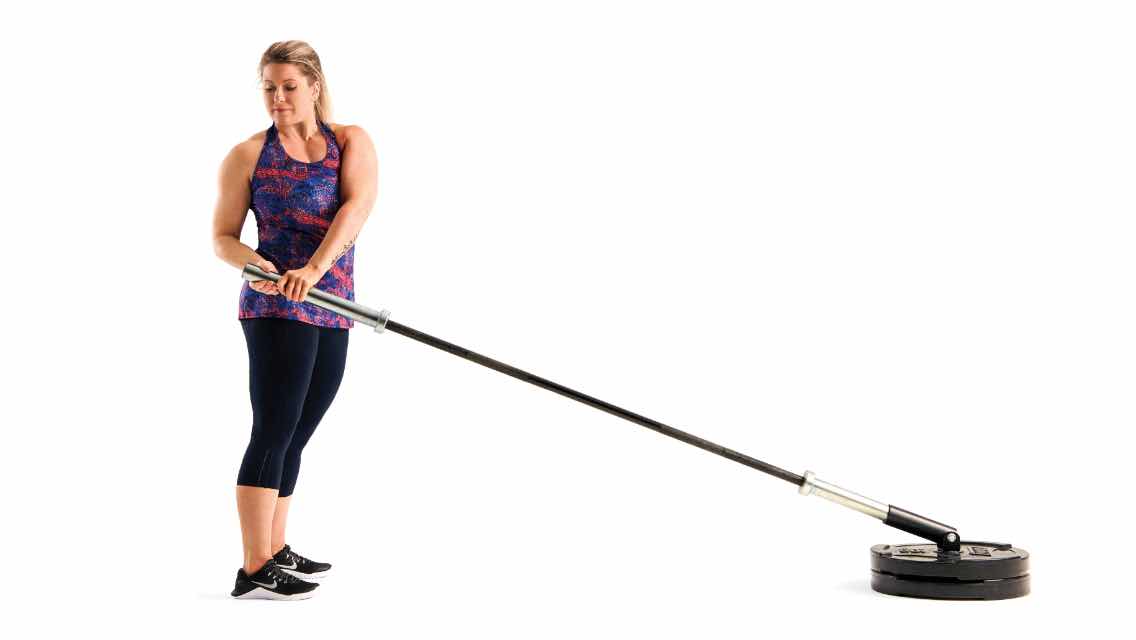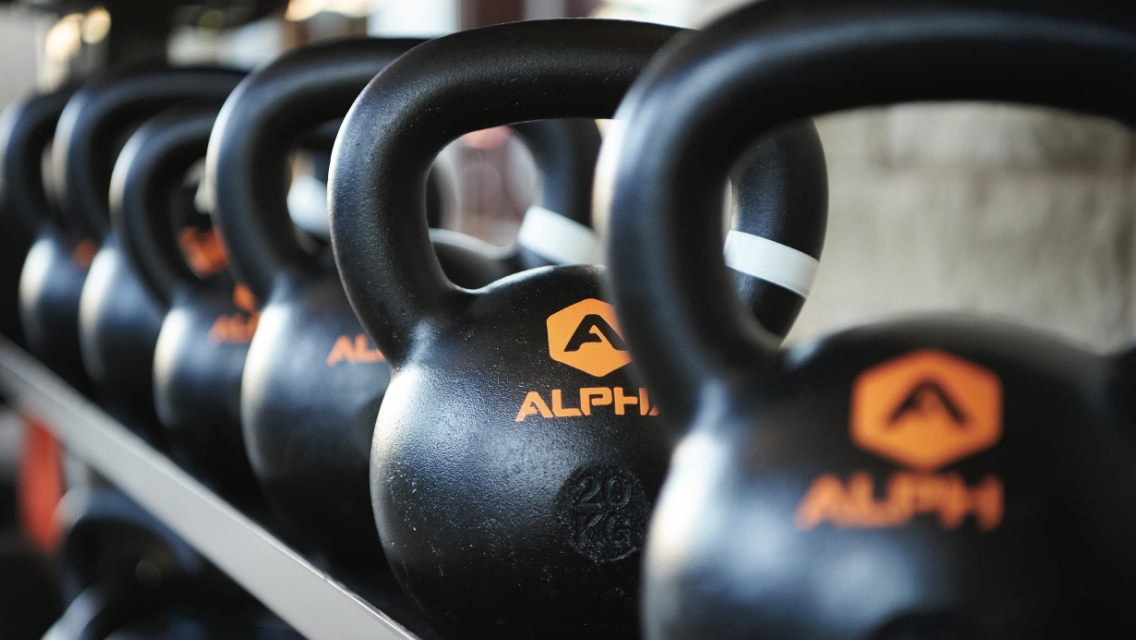In many areas of life, change happens progressively. From moving up to a new grade in school to taking on a promotion in your career, every step requires adding a little more responsibility until you’re ready for the next challenge. Advancement is no different when you’re looking to build strength — it happens gradually as your body adapts to lifting more weight.
“Human bodies are smart and adaptable, so we have to continue to give them a reason to make the changes we want to see,” says Susan Jackson, an in-club and virtual personal trainer based at Life Time in Des Moines, Iowa. “If you’re choosing to lift a weight that feels easy for you, your body won’t see any reason to get stronger or build muscle because it can already do what you’re asking of it. But if your body is challenged, especially by the last few reps, you’re giving it a reason to get stronger.”
How to Choose the Right Weight
Many strength-training programs are designed using progressive overload. This requires lifting a percentage of your maximum strength, which is the amount of weight you can lift for only one rep of a compound movement — your one-rep max (1RM). Finding your 1RM is a helpful way to measure and increase your pure strength.
“If you’re a beginner, simply start by getting familiar with different strength-training movements and equipment before you take on a progressive overload plan. It isn’t worth risking injury by going too heavy on movements if you’re still learning,” Jackson advises. (If you are newer and are looking to find your 1RM and increase your strength with a customized plan, she suggests working one-on-one with a fitness professional.)
For intermediate to advanced weightlifters, finding your 1RM requires a little trial and error. Warm up with a set of 10 reps using a weight that feels light for you and focus on correct form and breathing. Then, based on your lifting experience, estimate what you think your 1RM might be. From there, you can get to your 1RM within several sets:
- Three reps at 50 percent of your estimated 1RM
- Two reps at 65 percent of your estimated 1RM
- Two reps at 75 percent of your estimated 1RM
- One rep at 85 percent of your estimated 1RM
- One rep at 95 percent of your estimated 1RM
- One rep at 102 percent of your estimated 1RM
- One rep at 104 percent of your estimated 1RM
Continue this until failure. The heaviest amount you can do for one rep is your 1RM.
The Workout
Jackson developed this full-body workout using barbell, dumbbell, and body-weight movements. The barbell and dumbbell movements are designed to be progressive, so you’ll add weight as you move through each set based on your 1RM percentages. Each of the six moves will target a different muscle group.
Equipment needed:
- Barbell
- Weighted plates
- Dumbbells
- Bench
- EZ bar (optional; you can also use a barbell)
| Movement | Number of Sets | Number of Reps | 1RM Percentages or Weight | Rest |
| Romanian Deadlift | 3 | 5 | 60%, 65%, 70% | 2 minutes between sets |
| Dumbbell Chest Press | 4 | 8 | 55%, 60%, 65%, 70% | 2 minutes between sets |
| Barbell Bent-Over Row | 3 | 10 | A weight that feels heavy and allows you to maintain form | 2 minutes between sets |
| Barbell Front Squat | 3 | 5 | 60%, 65%, 65% | 2 minutes between sets |
| EZ Bar Curls and Pushups | 3 each | 10 each | A weight that feels heavy and allows you to maintain form | Complete superset, then rest for 2 minutes between sets |
Romanian Deadlift
- Load a barbell with your desired weight and stand with your feet shoulder-width apart and toes forward. Position the barbell so that it is over your shoelaces as you look straight down.
- Hinge at the hips to lower down and grab the bar with a slightly wider than shoulder-width grip; keep your back flat and shoulders back. Slowly stand up with the bar, bracing your core.
- Keep your core tight as you push your hips back to lower the bar back down while maintaining your flat back; keep your knees positioned over your ankles.
- Once you feel your hamstrings contract, your back is flat and the barbell is a few inches below your knees, stand back up, keeping the barbell close to your body. Push through the balls of your feet and heels.
- At the top of the movement, contract your upper back, core, and glutes by flexing from the middle of your back to your glutes.
- Repeat for three sets of five, resting and increasing your weight between each set.
Dumbbell Chest Press
- Lie on a bench holding a dumbbell in each hand, palms facing toward your feet (if you have shoulder issues, grip the dumbbells with your palms facing each other).
- Press the weights above your chest until your arms are straight; bring the weights back down slowly.
- Lower the weights to or just past your shoulders at the bottom of the movement; bring them close together at the top of each movement, but don’t touch them at the top, as it will take some of the strain off your muscles.
- Repeat for four sets of eight, resting and increasing your weight between each set.
Barbell Bent-Over Row
- Stand with your feet shoulder-width apart, bend your knees slightly, and bring your torso forward over a barbell. Keep your back straight.
- Grasp the bar with an overhand grip.
- Keeping your upper body stationary, bend your arms to draw the barbell up to your torso; pause.
- Lower the bar slowly to the starting position.
- Repeat for three sets of 10, resting between each set.
Barbell Front Squat
- In a front squat, the bar rests across the front of your shoulders (anterior deltoids). Try to grip the bar just outside of shoulder width with your thumbs wrapped around the bar.
- In this position, your hands do not support the weight of the bar. Similar to a back squat, your hands are simply holding the bar in place, so it’s OK for the bar to be held loosely with your fingers. The weight of the bar should be supported by the deltoids. To achieve this, push your elbows forward and up until your upper arms are nearly parallel to the floor. The higher your elbows, the more easily your deltoids can support the bar. If needed, take a wider grip on the bar, especially if you have a shorter upper arm and longer forearm.
- Once you find a sustainable position, take a stance a little narrower than a typical back-squat stance. Look straight ahead and push your butt toward the wall behind as you lower down; aim to lower a few inches deeper than parallel to the floor if your mobility allows.
- Your back will be much more vertical when performing a front squat compared to back squats, so remember not to bend over. The bar is in front of you, so heavy front squats can pull you off balance. Counteract this by keeping your hips under your shoulders as much as possible — allowing the knees to travel forward — and focus on driving your elbows up to stay balanced.
- Repeat for three sets of five, resting and upping your weight between each set.
EZ Barbell Curls and Pushups
- Load your desired weight onto an EZ bar (a multi-angled barbell for biceps and triceps). You can also use a regular barbell.
- Grab the bar with a shoulder-width grip so that your elbows are pinned to your sides.
- With the bar resting against your thighs, curl the weight toward your shoulders while keeping your elbows still.
- Curl the bar up until the undersides of your forearms make forceful contact with your biceps.
- Hold the contraction for a moment and then lower the weight with control until your elbows reach full extension.
- Complete one set of 10 before immediately moving into the pushups.
- Start in a high plank position with your arms straight and hands placed just wider than shoulder width. Your fingers should be spread out and pointed forward or outward. Most importantly, your body should form a straight line from your heels to your head; keep your gaze slightly forward.
- Lower yourself down to the floor, concentrating on maintaining your straight body position. Engage your glutes and abs to help maintain a rigid body position throughout the movement.
- Lower until your chest almost touches the floor. Pause before pushing back up to the starting position.
- Complete one set of 10, rest, then move back into the EZ barbell curl to repeat the superset for a total of three sets of 10 of each movement, resting in between sets.




